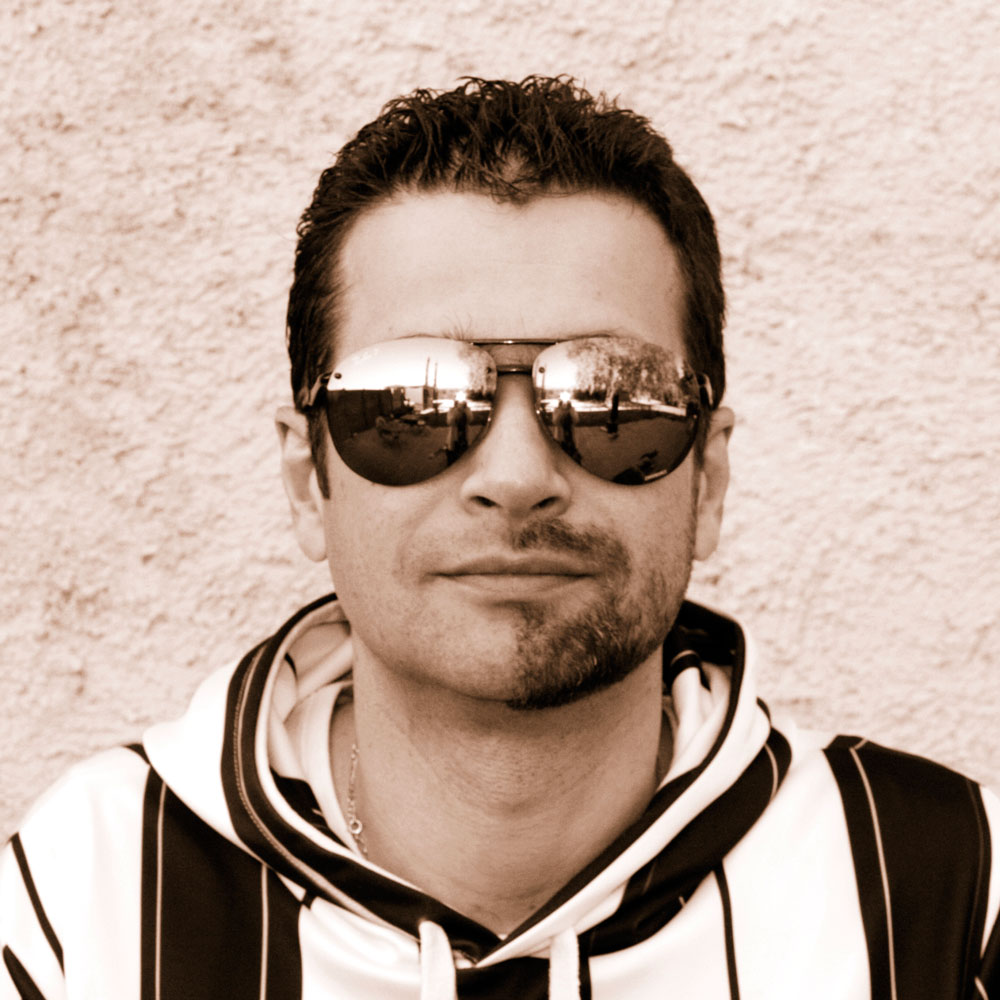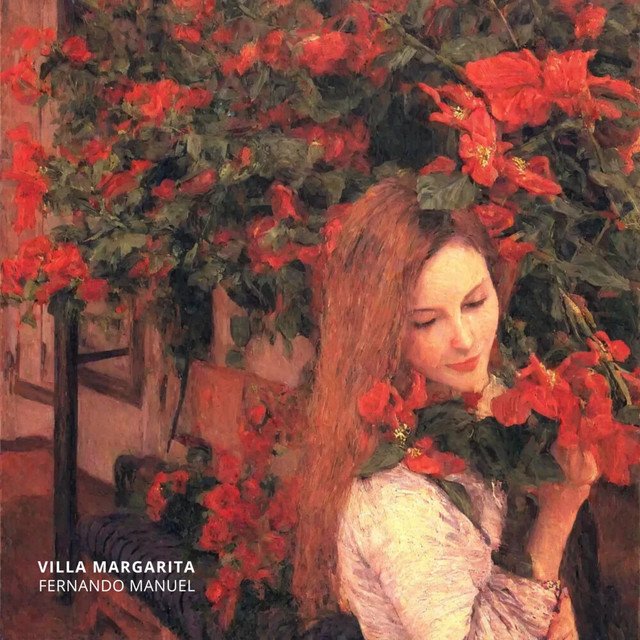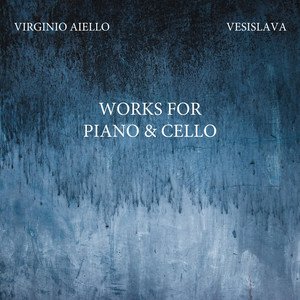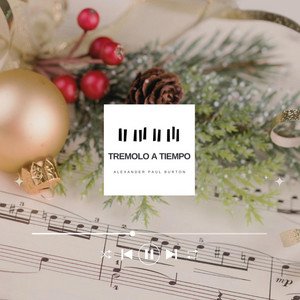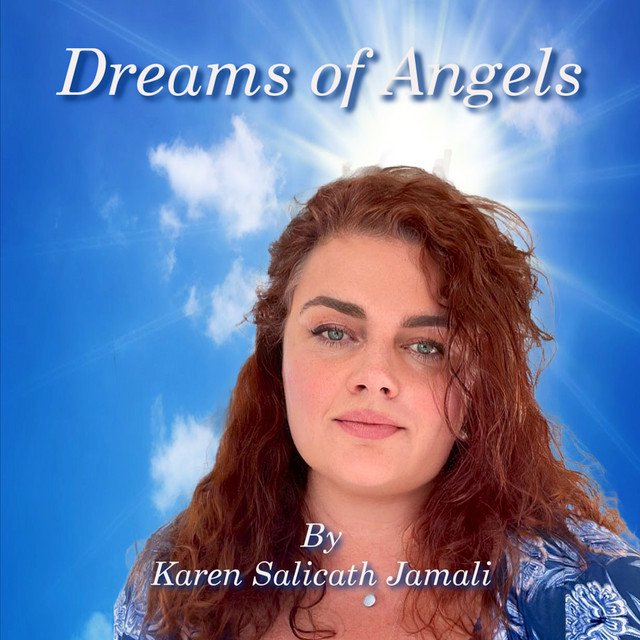Neoclassical Music ⁞ New Releases⁞ Artist Interviews⁞ Music News
Introduction of Neoclassical Music
Neoclassical music is a style of classical music that is characterized by its use of traditional forms and styles, as well as a focus on structure and balance. It is often seen as a reaction against the romantic style of music, which was characterized by emotion and passion, and was influenced by the ideas of the Enlightenment, which valued reason and classical learning.
Some of the key features of neoclassical music include the use of traditional forms such as sonata form, the use of clear and concise melodies, and the incorporation of elements of folk music and popular music. Neoclassical music also often featured a return to tonality, which is the use of a specific key or tonal center in a piece of music.
The neoclassical style has had a lasting influence on classical music, and it continues to be an important part of the classical repertoire
Favorite Neoclassical Music on Spotify
Favorite Neoclassical Videos on Youtube
Recent Neoclassical Interviews
Kristine Bratlie Interview on Nagamag
.
Nagamag:
What are the genres that describe better your music style?
Kristine Bratlie:
I like to call my music style a cross over between classical piano music, film, musical and jazz. It stretches in multiple directions, often even inside one song.
Nagamag:
Few words about your musical background and career?
Kristine Bratlie:
I am a norwegian classical pianist that developed into a composer, curios about HOW I could reach peoples heart with my music.
My musical education is from academies in Oslo, Norway and Salzburg, Austria (the birthplace of Mozart).
After turning back home, doing concerts and teaching with classical piano literature, I eventually started publishing music, both piano, chamber music and singing.
Now I live in Sweden, in a small town called Aneby.
Nagamag:
Do you remember your first connection of love to music that was the right impact to be a music artist now?
Kristine Bratlie:
I started to play piano at the age of 9, and had many fine years developing. But what I think gave me that boost, that feeling of joy and meaning was when I began singing (and playing) in a gospel choir at 13. I felt this inspiration from the harmonies, the rhythm, the joy. It became really a manifestation of music in my soul.
Nagamag:
Most artists have a favorite song from a different music genre than the one they are producing music for... Which is yours?
Kristine Bratlie:
Tiziano Ferro "Lo Stadio"
Nagamag:
Of Course Nagamag would love to listen also which track from a similar artist you admire?
Kristine Bratlie:
Ludovico Einaudi "Una Mattina"
Andrei Poliakov Interview on Nagamag
.
Nagamag:
What are the genres that describe better your music style?
Andrei Poliakov:
The foundation of my works is a well-educated neoclassical, romantic soundscape, but as soon as the music begins, it starts looking for cross-over opportunities to develop into an exciting house-party, jazz, pop, or electronic music, all these easily transforming to warm classical follow-ups – hence the eclectic style which I hope helps me tell better stories without words.
Essentially, I treat a musical genre as an additional color for the compositions, like seasoning in food; these colors help me get the emotions across and tell the stories to the listener with better precision and stronger impact:
I do not feel bound by a genre or a style, and instead I use and abuse the variety of styles to paint a deeper and more colorful, meaningful musical picture. Nevertheless, the Piano is always staying as a centerpiece of my compositions as I believe the richness and diversity of sounds of the “king of music” easily trumps any other instrument I know
Nagamag:
Few words about your musical background and career?
Andrei Poliakov:
I am a professional musician, composer and producer, received a fundamental classical music master education as a pianist and an oboist in Russia, and then continued with the professional musical career performing with world-renowned orchestras. Later I diversified my musical taste and capacity into jazz, rock, and pop genres, performing and recording with various bands and solo.
Since 2012 I have been living in Switzerland, Geneva, engaging into various professional activities both in artistic and business domains.
Nagamag:
Do you remember your first connection of love to music that was the right impact to be a music artist now?
Andrei Poliakov:
I started learning piano at a very early age of 3 or 4 years old: my parents are pianists and music has always been in the center of my life.
When I was in school (yes, seriously underage…) my favorite pastime while cutting lessons was to grab a couple of friends, buy a box of beers, go to a nearest abandoned building (which we had a lot in Russia in the 90s), sit down on a window sill, take a sip of a cold one, and put the 6th symphony by Tchaikovsky, or the 2nd (no, 3rd… any of them!) Rachmaninov’s piano concerto on a Walkman and basically drown in emotions and thoughts… and beer.
Hence, the music that has influenced me the most, comes from the second half of 19th – first half of 20th century – and I must admit, most of it is Russian music or music with Russian roots. Rachmaninov, Tchaikovsky, Skryabin, Mussorgsky, Rimsky-Korsakov, Prokofiev, Shostakovich, Stravinsky – but also Mahler, Bruckner, Richard Strauss – these composers influenced my taste the most. Depth of thought, wide array of emotions, unimaginable soundscape and extremely clever and elegant arrangement solutions; beautiful harmonies and melodies…
Being a teenager, I of course dived into the world of rock and pop music, starting with The Beatles - the band that still remains my all time favorite, and all the usual suspects: Queen, Michael Jackson, Metallica... and this journey continues to date.
Nagamag:
Is there a story behind your latest release "Moonlight" and would you like to share it?
Andrei Poliakov:
I dedicated this short piano essay to the Moon and to the most beautiful village in the world: Céligny - a tiny little place in Switzerland, where I live.
Céligny is inhabited by incredibly kind, smart, and very warm people, has an unbelievably rich and beautiful nature, and stunning views along with very old historical houses drowning in floral multi-coloredness, and there is #MontBlanc 🏔 on the horizon... and don't get me started on the birds' chirping and singing...
Once it was a home for Elizabeth Taylor and Richard Burton, the latter is buried in the old cemetery of the village.
Céligny is an unfathomably cozy place on this planet, and I feel very blessed to have had a chance to engrave my very intimate memories of this village.
I have actually composed the Moonlight in the heart of a former water mill!
And then one early morning in February I woke up and couldn’t fall asleep again. I decided to go for a walk and took along a video camera, and there was a full Moon in the skies! I was so enchanted and intrigued by mysterious flair of that morning that I couldn’t stop the camera running - and then I decided to use some of that footage for the video of this track.
Nagamag:
Is Moonlight going to be a part of a bigger project you are working on right now?
Andrei Poliakov:
Yes, this new solo piano release “MOONLIGHT” is continuing to form my live album “Moonlight & Sunshine”, and it follows the previous releases of 2020: “Declaration of Love”, “Lullaby”, and “La Promenade in Paris”
The “Moonlight & Sunshine” album has an uncommon approach for the neoclassics genre: every next release features 2 different versions of one motive, coming to life as a piano solo piece, interpreting a narrative in the moonlight, and as a fully arranged piece, revealing the same story under the sunshine.
The album has been evolving live on the major streaming platforms as a playlist (Spotify, Apple Music, YouTube and others), thereby gradually forming the full album as new pairs of tracks are released.
The album Moonlight & Sunshine on Spotify: open.spotify.com/playlist/3MCyNWldBXCbZdLKehspn2?si=882c2e2dc09d4074
In a few weeks I am planning to follow up and release the fully arranged track called "Sunshine", which is inspired by the melodics of Moonlight, but features a duet of piano and violin (played by a very talented violinist from Russia) and other instruments.
Nagamag:
Most artists have a favorite song from a different music genre than the one they are producing music for... Which is yours?
Andrei Poliakov:
The Beatles "Here comes the Sun"
Nagamag:
Of Course Nagamag would love to listen also which track from a similar artist you admire?
Andrei Poliakov:
Ludovico Einaudi Una Mattina
Neoclassical Features
Villa Margarita – Fernando Manuel
“О, Villa Margarita – это великолепная композиция! Она словно переносит в эпоху неоклассицизма, наполнившуюся чувствами и эмоциями. С первых нот вы погрузитесь в атмосферу изысканности и благородства, словно окунулись в потрясающий, цветущий сад. Мелодия льется из инструментов словно ручей, создавая картины живописных пейзажей. Грациозные фортепианные фразы переплетаются с мягкими звуками струнных инструментов, создавая удивительное сочетание гармонии и красоты.”
-Nagamag.com
Expand to read review translations *
“Oh, Villa Margarita – this is a magnificent composition! It seems to take you back to the era of neoclassicism, filled with feelings and emotions. From the first notes you will be immersed in an atmosphere of sophistication and nobility, as if you have plunged into a stunning, blooming garden. The melody flows from the instruments like a stream, creating pictures of picturesque landscapes. Graceful piano phrases intertwine with the soft sounds of string instruments, creating an amazing combination of harmony and beauty.”
-Nagamag.com
“¡Oh, Villa Margarita, es una composición magnífica! Parece transportarte a la época del neoclasicismo, lleno de sentimientos y emociones. Desde las primeras notas te sumergirás en una atmósfera de sofisticación y nobleza, como si te hubieras sumergido en un impresionante jardín floreciente. La melodía fluye de los instrumentos como un arroyo, creando imágenes de paisajes pintorescos. Graciosas frases de piano se entrelazan con los suaves sonidos de los instrumentos de cuerda, creando una sorprendente combinación de armonía y belleza.”
-Nagamag.com
The original review of “Fernando Manuel – Villa Margarita
“ is written in the native language that is spoken by the dedicated, for this song, Nagamag’s Neoclassical reviewer and followed by two translations*, of which the one depends from the country of origin of the artist “Fernando Manuel
“ (Mexico) and the other one is translated to a different language than original review and the country of origin of the artist.
* Automatically Translated
Nagamag unveils the mesmerizing composition “Villa Margarita”, an extraordinary creation of harmony and creativity that “Fernando Manuel” offered to all of us. A Neoclassical song, which evoked an emotional voyage to our curator that desired to write down a unique review for “Fernando Manuel – Villa Margarita”. What also sets this song among the featured choices of Nagamag is the way that “Villa Margarita” is enriched with Piano characteristics. “Fernando Manuel – Villa Margarita” is a rich music creation that deserves to be listened to again and again. Nagamag is honored to share this detailed music review by one of our experienced reviewers for Neoclassical music compositions. As always, Nagamag keeps up evaluating Neoclassical songs from across the globe, ensuring that all Neoclassical enthusiasts around the world have access to these auditory treasures .
Neoclassical home page where “Fernando Manuel – Villa Margarita” is hosted on Nagamag Music Magazine
Nagamag takes pride in supporting Neoclassical artists like “Fernando Manuel”, providing music reviews and music discoveries like “Villa Margarita”.
This music post about song “Villa Margarita” by “Fernando Manuel” is hosted in Neoclassical page on Nagamag.
There you can find similar Neoclassical artists to “Fernando Manuel” and more Neoclassical, Piano songs like “Villa Margarita” that have been carefully selected by Nagamag’s Neoclassical experienced curators and reviewed by Nagamag’s Neoclassical dedicated reviewers.
Learn everything about Neoclassical on Wikipedia
If you enjoyed “Fernando Manuel – Villa Margarita” but you have never listened before to any other Neoclassical song or you are interested in learning more about Neoclassical music gerne then click here to visit Neoclassical music page on Wikipedia.
Neoclassical music refers to a distinct style with common characteristics. Each genre carries its unique sound, instruments, and cultural influences. For a deeper understanding of Neoclassical music, Wikipedia provides comprehensive insights into its history, notable artists, and iconic works. Delve into the diverse and dynamic world of Neoclassical music through this valuable resource, broadening your knowledge around Neoclassical genre.
Amor Fati – Amorphous Nature
“Built from complex soundscapes, the recent release of “Amor Fati” calls us to explore the secret aspect of nature. Sober melodies and dynamic waves are wisely combined to offer a mystic atmosphere of unique Epic feeling of sound. A six-minute experience which can greatly affect everyone.”
-Nagamag.com
Expand to read review translations *
“Χτισμένο από περίπλοκα ηχητικά τοπία, η πρόσφατη κυκλοφορία του “Amor Fati” μας καλεί να εξερευνήσουμε τη μυστική πτυχή της φύσης. Οι νηφάλια μελωδίες και τα δυναμικά κύματα συνδυάζονται σοφά για να προσφέρουν μια μυστικιστική ατμόσφαιρα μοναδικής επικής αίσθησης ήχου. Μια εμπειρία έξι λεπτών που μπορεί να επηρεάσει πολύ τους πάντες.”
-Nagamag.com
“Construido a partir de complejos paisajes sonoros, el reciente lanzamiento de “Amor Fati” nos llama a explorar el aspecto secreto de la naturaleza. Melodías sobrias y ondas dinámicas se combinan sabiamente para ofrecer una atmósfera mística de sensación de sonido épica única. Una experiencia de seis minutos que puede afectar enormemente a todos.”
-Nagamag.com
The original review of “Amorphous Nature – Amor Fati” is written in the native language that is spoken by the dedicated, for this song, Nagamag’s Neoclassical reviewer and followed by two translations*, of which the one depends from the country of origin of the artist “Amorphous Nature” (United States) and the other one is translated to a different language than original review and the country of origin of the artist.
* Automatically Translated
Nagamag unveils the mesmerizing composition “Amor Fati”, an extraordinary creation of harmony and creativity that “Amorphous Nature” offered to all of us. A Neoclassical song, which evoked an emotional voyage to our curator that desired to write down a unique review for “Amorphous Nature – Amor Fati”. What also sets this song among the featured choices of Nagamag is the way that “Amor Fati” is enriched with Cinematic characteristics. “Amorphous Nature – Amor Fati” is a rich music creation that deserves to be listened to again and again. Nagamag is honored to share this detailed music review by one of our experienced reviewers for Neoclassical music compositions. As always, Nagamag keeps up evaluating Neoclassical songs from across the globe, ensuring that all Neoclassical enthusiasts around the world have access to these auditory treasures .
Additional information/sources for Amorphous Nature – Amor Fati
The song “Amor Fati” or translated from Latin as “love of fate” is inspired by the philosophy that one should treat each and every moment, no matter how challenging, as something to be embraced, not avoided. Or as stated by Marcus Aurelius: “A blazing fire makes flame and brightness out of everything that is thrown into it.” The song is an attempt to capture the essence of the that feeling of flow in life with all its up and downs and ultimate perseverance and growth. It utilizes utilizes mostly classical instrumentation with cello, violin, piano, Latin choir with a modern flair including electronic elements.
Neoclassical home page where “Amorphous Nature – Amor Fati” is hosted on Nagamag Music Magazine
Nagamag takes pride in supporting Neoclassical artists like “Amorphous Nature”, providing music reviews and music discoveries like “Amor Fati”.
This music post about song “Amor Fati” by “Amorphous Nature” is hosted in Neoclassical page on Nagamag.
There you can find similar Neoclassical artists to “Amorphous Nature” and more Neoclassical, Cinematic songs like “Amor Fati” that have been carefully selected by Nagamag’s Neoclassical experienced curators and reviewed by Nagamag’s Neoclassical dedicated reviewers.
Learn everything about Neoclassical on Wikipedia
If you enjoyed “Amorphous Nature – Amor Fati” but you have never listened before to any other Neoclassical song or you are interested in learning more about Neoclassical music gerne then click here to visit Neoclassical music page on Wikipedia.
Neoclassical music refers to a distinct style with common characteristics. Each genre carries its unique sound, instruments, and cultural influences. For a deeper understanding of Neoclassical music, Wikipedia provides comprehensive insights into its history, notable artists, and iconic works. Delve into the diverse and dynamic world of Neoclassical music through this valuable resource, broadening your knowledge around Neoclassical genre.
Latest Neoclassical discoveries
little bird – molly leach
Μέσα στην ησυχία του όμορφου τοπίου, υπέροχες νότες ξεπηδούν και στολίζουν την μέρα. Τα ανήσυχα βήματα της μελωδίας κόβουν σ... >>> Read full review & listen to the song on Nagamag #neo #modernclassical #experimentalelectronic #mollyleach #unitedstates #nagamag #musicmagazine #musicreview #review
Hello My Love – Christopher Wall
Η υπέροχη ρομαντική μελωδία περιπλανιέται ανάμεσα σε στη χαρά και στη λύπη. Η αισιοδοξία με την θλίψη μάχονται ποια θα νικήσε... >>> Read full review & listen to the song on Nagamag #cinematic #nagamag #musicmagazine #musicreview #review
The Silicon Island: Clash – OHNomad
Οι νότες της μελωδίας γαλήνια ξεπηδούν πίσω από τα αγέρωχα βουνά σαν τον ήλιο που βγαίνει το πρωί. Η μελωδία με μια μελαγχολί... >>> Read full review & listen to the song on Nagamag #cinematic #nagamag #musicmagazine #musicreview #review
Vesislava – Virginio Aiello
Μέσα από τα δάκρυα μας βγαίνει μια μελωδία τόσο θλιμμένη και μελαγχολική. Το κρύο του χειμώνα μας διαπερνά αλλά η μελωδία που... >>> Read full review & listen to the song on Nagamag #cinematic #nagamag #musicmagazine #musicreview #review
23 – Alessandro Giannelli
Ωραία και μελωδικά κυλά ο ρυθμός και αγκαλιάζει την ψυχή μας. Οι νότες του πιάνου αγγίζουν τις ευαίσθητες χορδές μας και μας ... >>> Read full review & listen to the song on Nagamag #neo #modernclassical #cinematic #epicmusic #alessandrogiannelli #switzerland #nagamag #musicmagazine #musicreview #review
Promissas – Mare Insularum Pier
Mesmerizing and incredibly calming atmosphere of this piano beauty engage deeply within first notes. Harmonic structure and c... >>> Read full review & listen to the song on Nagamag #neo #modernclassical #solopiano #mareinsularumpier #italy #nagamag #musicmagazine #musicreview #review
Rouge – Alexander Paul Burton
Serene and very beautiful ethereal melodies and gentle textures with this enchanting and soothing composition. Its harmonic s... >>> Read full review & listen to the song on Nagamag #neo #modernclassical #alexanderpaulburton #canada #nagamag #musicmagazine #musicreview #review
Martedì – Alessandro Giannelli
Η ρομαντική και ταξιδιάρικη μελωδία είναι τόσο υπέροχο να την ακούς και ιδιαίτερα σε συνδυασμό με αυτά τα μοναδικά φωνητικά. ... >>> Read full review & listen to the song on Nagamag #neo #modernclassical #cinematic #epicmusic #ambient #alessandrogiannelli #switzerland #nagamag #musicmagazine #musicreview #review
Angel Gabriels Heart – Karen Salicath
Мелодия пиано исполненная так чувственно и с ноткой нежности, что прекрасно сочетается с общим настроением композиции. Подобн... >>> Read full review & listen to the song on Nagamag #piano #nagamag #musicmagazine #musicreview #review
Difference between Classical and Neoclassical Music
Classical music refers to a broad range of music written in the classical tradition, which encompasses a wide range of styles and forms. It is generally characterized by its formal structure and its use of traditional instruments and ensemble configurations.
Neoclassicism is a style of music that refers to the revival and use of classical forms and styles in music, particularly in the 18th and early 19th centuries. It is characterized by its use of clear, concise forms and a focus on structure and balance. Neoclassicism was a reaction against the romantic style of music, which was characterized by emotion and passion, and was influenced by the ideas of the Enlightenment, which valued reason and classical learning.
Some of the key differences between classical and neoclassical music include:
Time period: Classical music refers to music written during the classical period (1730-1820), while neoclassicism refers to music written after the classical period that incorporates elements of classical forms and styles.
Emphasis on structure: Classical music is known for its formal structure and the use of traditional forms such as the sonata and the symphony. Neoclassical music also places a strong emphasis on structure, but may also incorporate elements of popular music and folk music.
Emphasis on emotion: Classical music is often more reserved and formal in its emotional expression, while neoclassicism tends to be more emotional and expressive.
Use of tonality: Both classical and neoclassical music use tonality, but neoclassicism often incorporates a wider range of tonal structures and may experiment with atonality.
Use of traditional instruments: Both classical and neoclassical music use traditional classical instruments such as strings, woodwinds, brass, and percussion. However, neoclassicism may also incorporate elements of popular music and folk music, and may use a wider range of instruments.
Overall, the main difference between classical and neoclassical music is the time period in which the music was written, and the specific techniques and styles used by the composer. Classical music is generally more formal and reserved in its expression, while neoclassicism tends to be more expressive and may incorporate elements of popular music and folk music.
The most used instruments in Neoclassical Music
In neoclassical music, the most common instruments used are those found in the classical orchestra, including:
Strings: Violin, viola, cello, double bass
Woodwinds: Flute, oboe, clarinet, bassoon
Brass: Trumpet, French horn, trombone, tuba
Percussion: Timpani, snare drum, bass drum, cymbals, xylophone, marimba, triangle
Keyboard: Piano, harpsichord
These instruments are often used to create a wide range of textures and sounds, and are featured in many different types of classical music, including neoclassical music. In addition to these instruments, many composers also incorporate elements of popular music and folk music into their compositions, and may use a variety of other instruments such as guitars, bass, drums, and synthesizers.
It’s also worth noting that many composers and performers of neoclassical music are skilled in a variety of different instruments, and may switch between different instruments in order to achieve the desired sound and texture.
Vocals are sometimes used in neoclassical music, although they are not as common as instrumental music. When vocals are used in neoclassical music, they are typically performed by trained classical singers who have the ability to sing with precise pitch and control.
One common use of vocals in neoclassical music is in operatic compositions, where singers perform arias and recitatives in a style that is similar to traditional opera. Neoclassical opera is a subgenre of classical music that combines elements of traditional opera with elements of neoclassicism, and often incorporates elements of popular music and folk music.
In addition to operatic vocals, vocals may also be used in other forms of neoclassical music, such as choral music or vocal chamber music. Some composers may also incorporate elements of popular music or folk music into their compositions, and may use vocals in a more modern or experimental style.
It’s worth noting that the use of vocals in neoclassical music is highly dependent on the individual composer and the specific piece of music, and not all neoclassical compositions will feature vocals.


